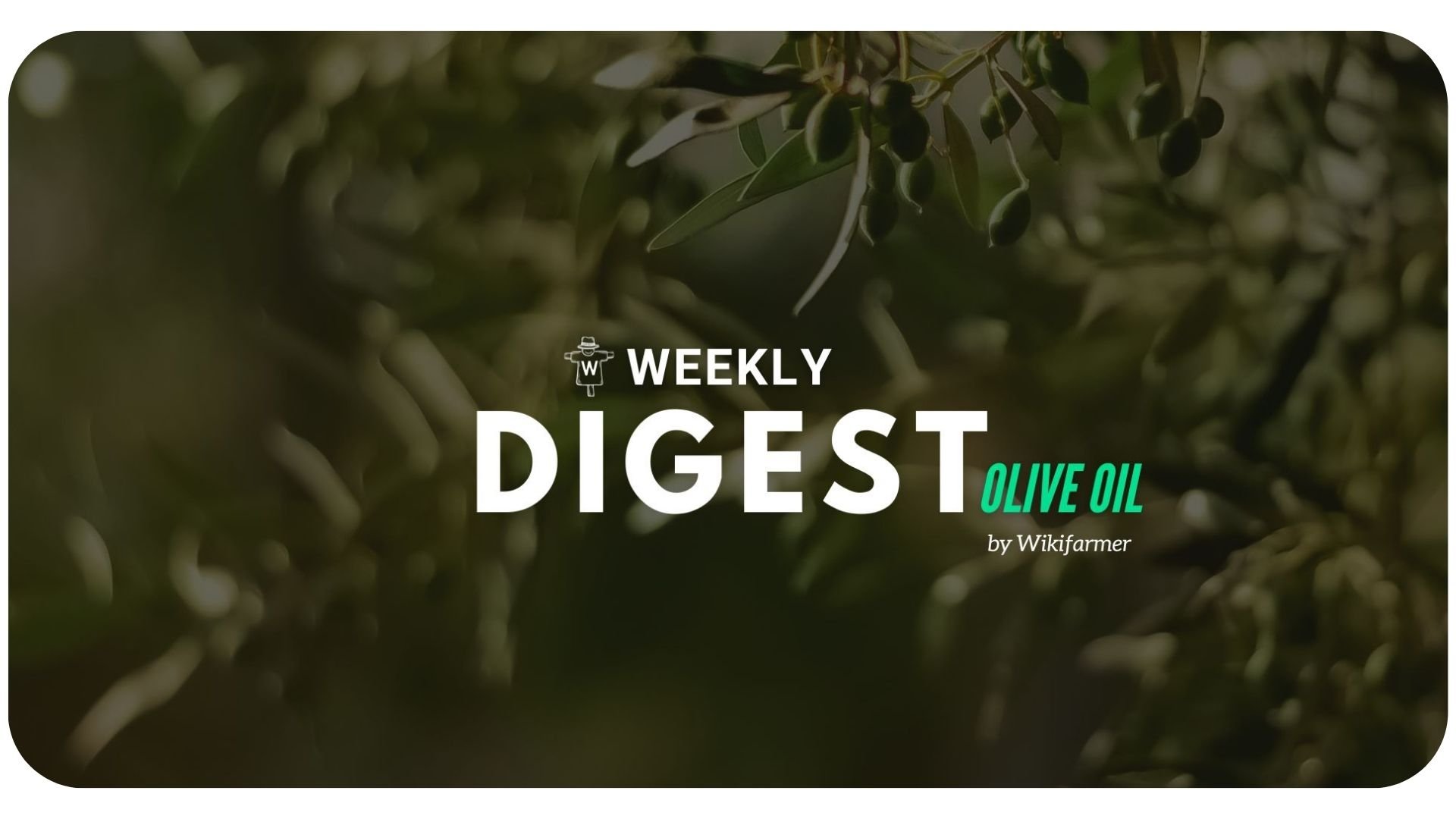Olive Oil Market Digest w35-w36

Weekly Olive Oil Market Updates
Price Updates
The olive oil market is showing increased activity following the summer holidays. Prices have risen compared to the previous month, and suppliers focus on depleting their inventories. Our experts, along with Wikifarmer Marketplace, have provided key insights into this week's market trends. To gain a clearer understanding of these movements, we've also gathered pricing data from the Union of Olive Oil-Producing Municipalities of Crete, PoolRed, and Ismea Mercati.
-png-1.png?width=752&height=467&name=0ZhfO-average-of-oil-mill-prices-evoo%20(10)-png-1.png)
The current market behavior is typical for this period following the summer vacation. As stakeholders prepare for the upcoming crop season, prices rise at the last minute. This increase is driven by buyers needing to replenish their stock, and with limited availability, further price reductions are unlikely. The market has been unpredictable this year due to various challenges.
In general, great tension exists in the market, which is bound to remain until the start of the new campaign. The last hesitant producers, who were seeking high prices, will likely be driven by fear of the forthcoming crash and will, therefore, accept lower prices. The first olives will begin to be milled in Greece and Spain at the end of September. However, there is significant uncertainty about quantity and quality, mainly due to high temperatures during pressing. Portuguese producers have already begun offering Extra Virgin Olive Oil from the new campaign, even before harvesting begins, at sharply lower prices than the current ones. In Tunisia, the upcoming crop is expected to be a good one, with rainfalls observed in the main production regions.
Looking ahead to the new crop, Spanish production is projected to reach 1.6 million tons. However, the official forecast will be released in October by Junta de Andalucia. When the latest crop arrives, the market may see a split, with fresh olive oil commanding high prices while older virgin olive oil may be priced lower.
-png.png?width=758&height=471&name=PdLod-average-of-oil-mill-prices-virgin%20(11)-png.png)
-png-1.png?width=755&height=469&name=9VVjm-average-of-oil-mill-prices-lampante%20(10)-png-1.png)
In Italy, the situation mirrors that of Spain, with stakeholders waiting for the next crop. There is a high demand for olive oil, but availability is limited, with very little extra virgin olive oil on the market. The upcoming crop is expected to be disappointing, estimated at 200,000 to 230,000 tons, due to the hot weather over the summer. Interest in "olives on the trees" is low due to the uncertainty of yields. In Greece, the market has reopened with higher prices compared to late July, but recent weeks have been stable. Producers are concerned about prolonged high temperatures and lack of rainfall, which have impacted irrigation and overall production.
Expanding in Slovakia: New opportunities for the olive oil market
The rising interest among Slovaks in healthy and organic food presents a significant opportunity for olive oil, especially extra virgin olive oil, which dominates 78% of the Slovak olive oil market, according to ICEX Spain Export and Investments. Spain is the leading supplier of olive oil to Slovakia, holding a substantial share of 43.7% by volume and 44.28% by value in 2023, far surpassing its competitors, with Italy being the main rival in terms of quantity. Slovak consumers, primarily aged 25 to 50 and focused on a healthy lifestyle, often have high purchasing power, making them a key target for olive oil marketing. While Spanish olive oil enjoys broad availability in Slovak supermarkets and is perceived as medium-high quality, Italian and Greek olive oils are seen as superior, partly due to targeted marketing strategies. To maintain its market leadership, Spain has to invest in marketing and educational campaigns to highlight the benefits of Spanish olive oil. Meanwhile, Italian brands are expected to gain market share, driven by their established presence and targeted niche marketing. Overall, olive oil sales in Slovakia are projected to increase by 24.2% in value from 2023 to 2028, outpacing other vegetable oils, though from a smaller base.

Retailers are dropping prices with a notable exception
In August, the Spanish packaged olive oil market saw notable changes in the recommended retail prices (RRP) for white-label products across major distribution chains. Despite the typically low season for domestic consumption, a significant price adjustment occurred. Starting on August 21, a major retailer announced a price drop for mild and intense olive oils in both 1 and 3-litre formats, reducing the RRP from €7.62 per litre to €6.95. This decrease was quickly mirrored by other major retailers, driven by imbalances in the pricing of refined olive oils at the source. The discrepancy between the cost of lampante oil and its refined counterpart has led to inexplicably low prices, allowing refiners to offer significantly lower retail prices.
However, an exception to this trend was observed with one retailer, which reduced the price of its one-liter bottle of olive oil by six cents, setting the new RRP at €6.89. This retailer applied the same discount to its extra virgin olive oil. As a result, consumers now face a uniform price across most retailers, with only a small variance introduced by this particular chain. This situation reflects the broader market dynamics and the influence of price adjustments at the source on retail pricing strategies.
.png?width=450&height=87&name=New%20Logo%20(1).png)
.jpg?upscale=true&width=400&upscale=true&name=Untitled%20(300%20x%20300%20px).jpg)
